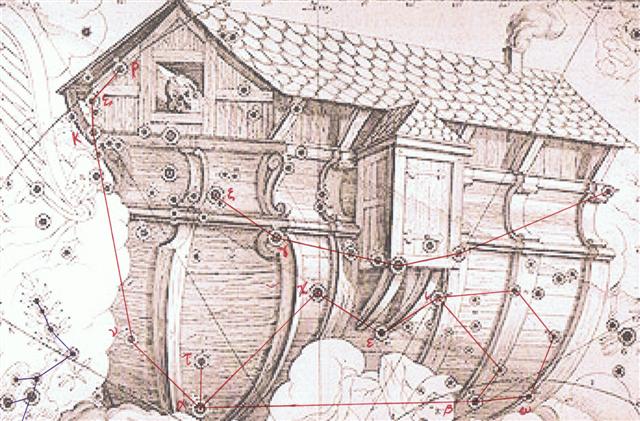8. Instead we should rather try to count 229 glyphs ahead from Aldebaran in order to search for the date when it will culminate at midnight. The day numbers in our own calendar probably correspond to glyph numbers which are 144 less (cfr Structure of the G Text):
Perhaps the headless Rogo in Gb1-3 indicates where Aldebaran is crossing the meridian at midnight. The 'hole' in its body could be a sign of culmination. Or it could be the face of the full moon, indicating Antares is close to Sun (according to the nakshatra method). If we assume precession has moved the stars 1 day further into the year between the 'epoch' of Allen's culmination dates and the 'epoch' for right ascensions in my astronomy book then 228 days from superior to inferior cumulation seems to agree with the G text. And instead of counting the year as 365¼ we could use 364 and come close to 228: 1 / 8 * 364 = ca 46 days. 364 / 2 + ca 46 = ca 228 days. We can trace the other Rogo figure with a hole (Gb3-15) backwards in time 228 days to search for a star which nighttime culmination it could reperesent:
Tureis is ε Carinae, at 555 (= 9 * 60 + 15) minutes of right ascension, and has been depicted as supporting the closed door of Noah's Ark:
Tureis means 'little shield', but maybe south of the equator the 'door' is widely a-jar. |
|||||||||||||||||||||||||||||||||||||||||||||||||









